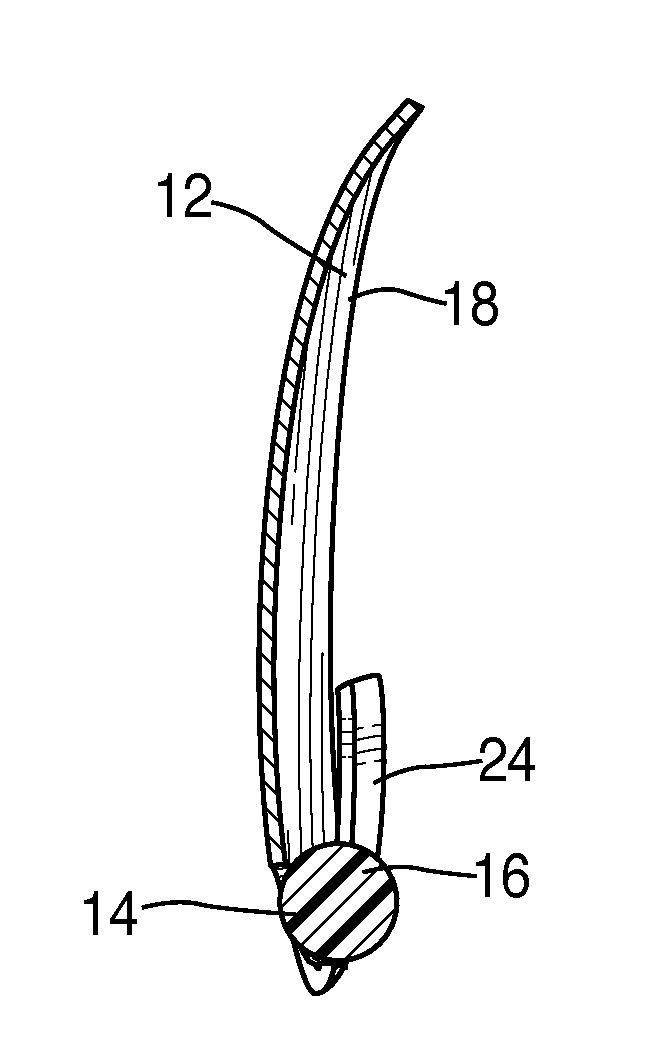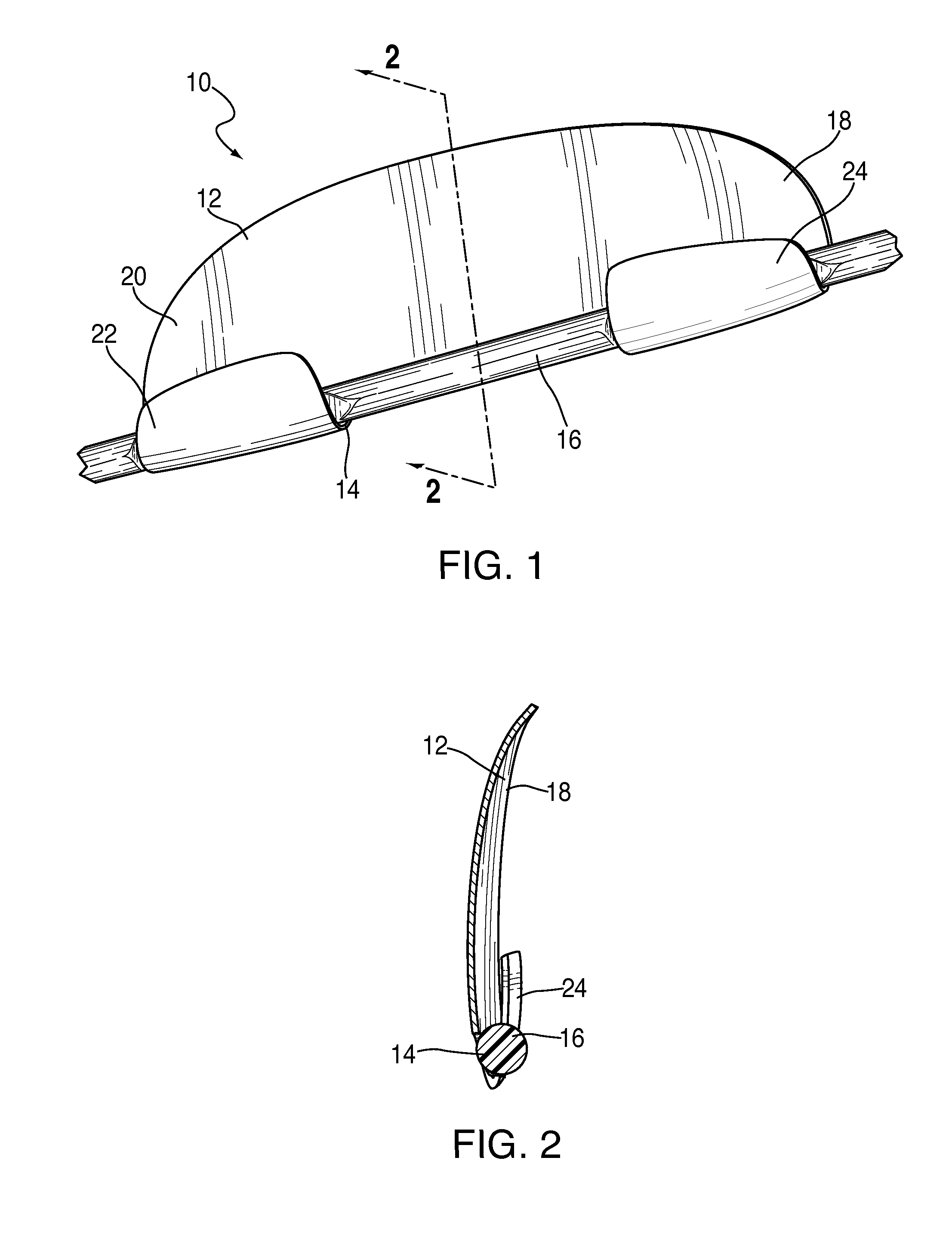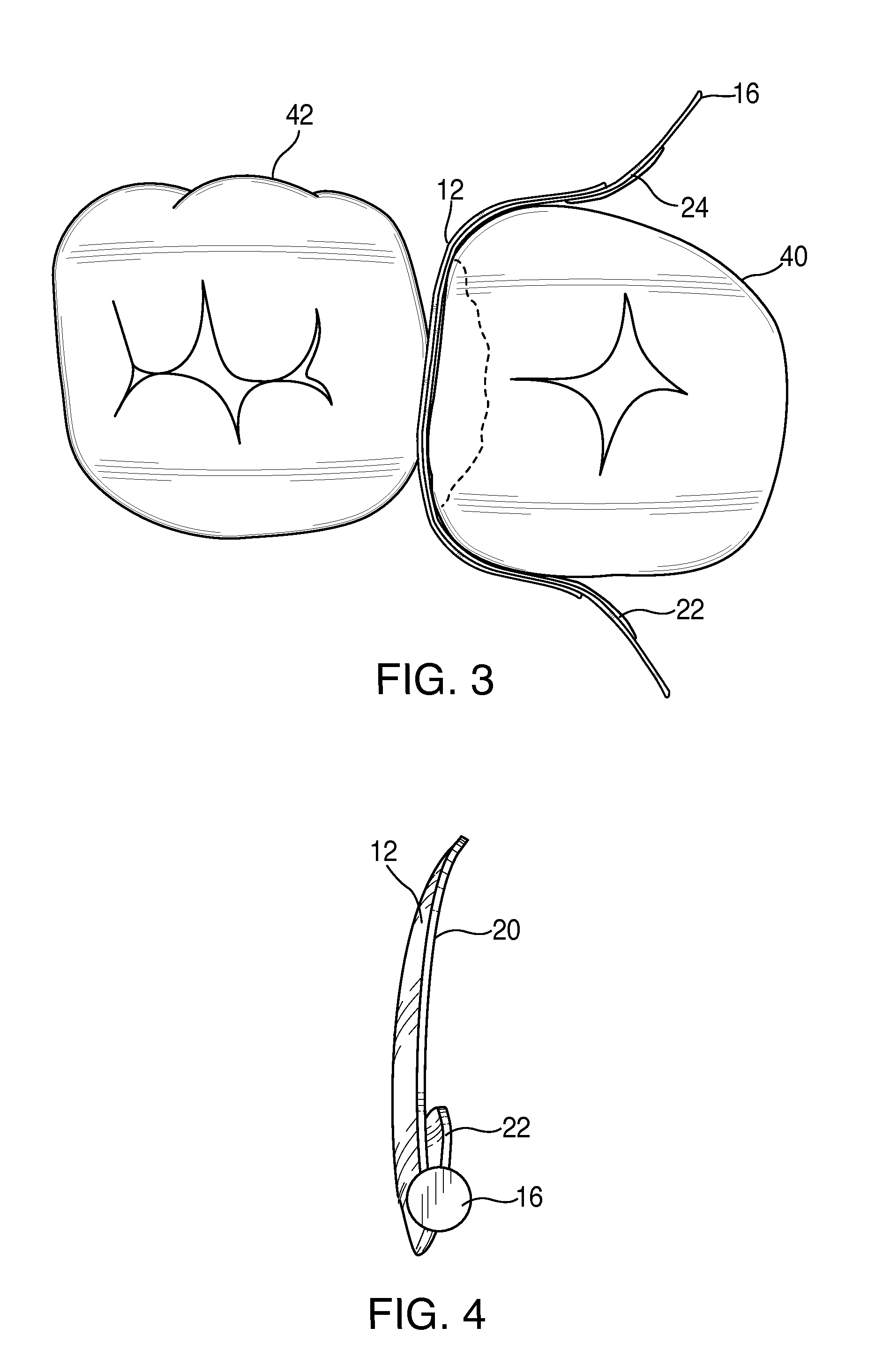Dental matrix
a technology of dental matrix and interproximal placement, applied in the field of dental matrix, can solve the problems of difficult interproximal placement of dental matrix, loss of contact point with adjacent teeth, and special difficulty, and achieve the effect of effective and efficient insertion
- Summary
- Abstract
- Description
- Claims
- Application Information
AI Technical Summary
Benefits of technology
Problems solved by technology
Method used
Image
Examples
Embodiment Construction
[0029]With reference to FIGS. 1 through 4, there is shown a preferred embodiment of a dental matrix 10 of the present invention. Generally, the dental matrix 10 has a band 12 with an edge 14 for placement toward the gingival margin of the tooth 40 to be restored, and a strip 16 attached to and extending along edge 14. The band 12 is preferably formed of stainless spring steel or any other appropriate metallic, plastic or other flexible and resilient material. Stainless spring steel provides the band 12 with flexibility so that it can be molded around a tooth into a desired position. Preferably, the band 12 is a sectional band rather than a circumferential band.
[0030]The strip 16 is preferably formed of dental floss comprised of nylon filaments or plastic ribbon. Preferably, polytertafluoroethylene (PTFE) ribbon sold under the brand name Teflon® may be utilized, but other materials having an ease-of-insertion property comparable to that of dental floss such as polyethylene fibers, po...
PUM
 Login to View More
Login to View More Abstract
Description
Claims
Application Information
 Login to View More
Login to View More - R&D
- Intellectual Property
- Life Sciences
- Materials
- Tech Scout
- Unparalleled Data Quality
- Higher Quality Content
- 60% Fewer Hallucinations
Browse by: Latest US Patents, China's latest patents, Technical Efficacy Thesaurus, Application Domain, Technology Topic, Popular Technical Reports.
© 2025 PatSnap. All rights reserved.Legal|Privacy policy|Modern Slavery Act Transparency Statement|Sitemap|About US| Contact US: help@patsnap.com



